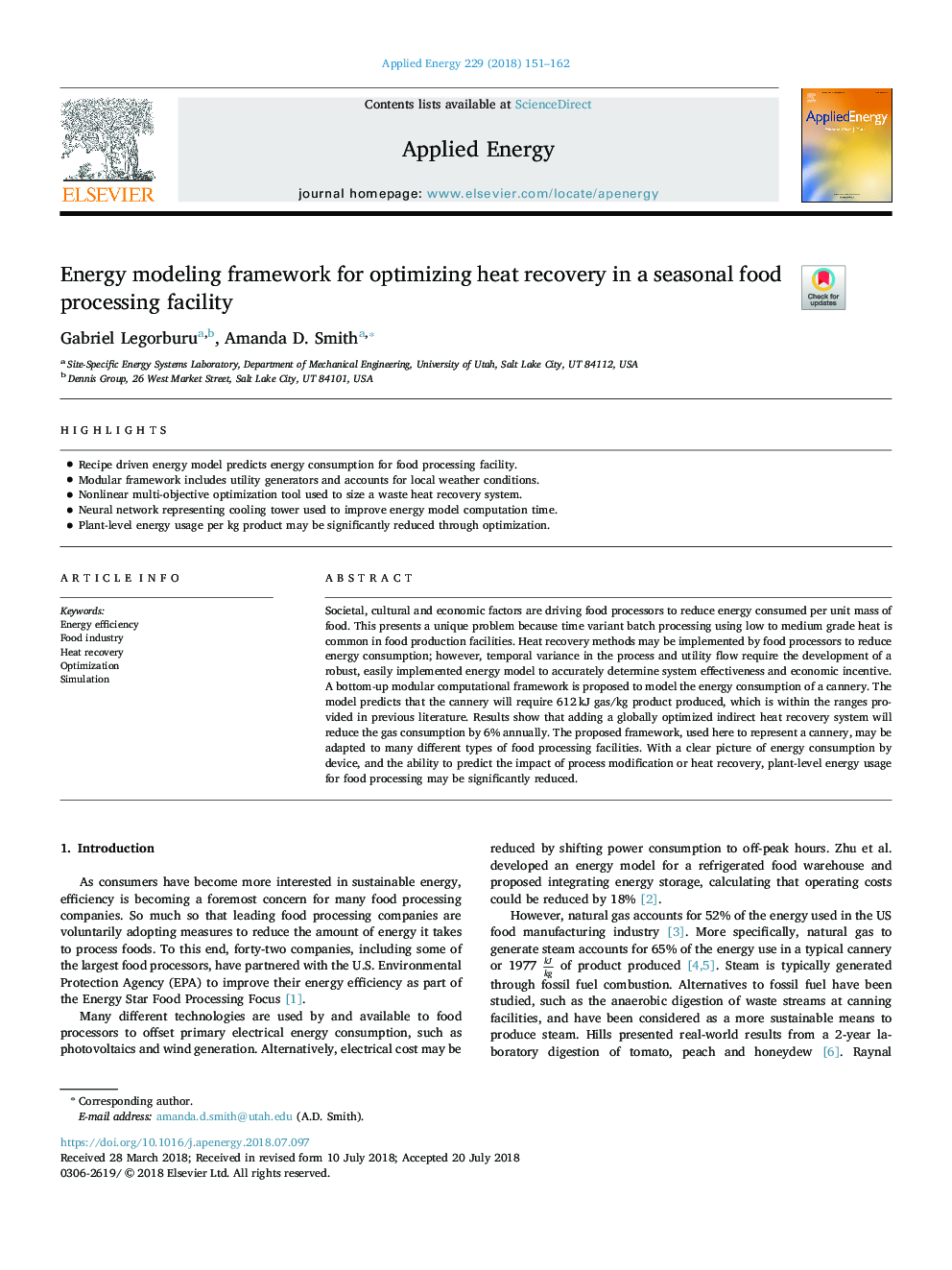| Article ID | Journal | Published Year | Pages | File Type |
|---|---|---|---|---|
| 6679640 | Applied Energy | 2018 | 12 Pages |
Abstract
Societal, cultural and economic factors are driving food processors to reduce energy consumed per unit mass of food. This presents a unique problem because time variant batch processing using low to medium grade heat is common in food production facilities. Heat recovery methods may be implemented by food processors to reduce energy consumption; however, temporal variance in the process and utility flow require the development of a robust, easily implemented energy model to accurately determine system effectiveness and economic incentive. A bottom-up modular computational framework is proposed to model the energy consumption of a cannery. The model predicts that the cannery will require 612â¯kJ gas/kg product produced, which is within the ranges provided in previous literature. Results show that adding a globally optimized indirect heat recovery system will reduce the gas consumption by 6% annually. The proposed framework, used here to represent a cannery, may be adapted to many different types of food processing facilities. With a clear picture of energy consumption by device, and the ability to predict the impact of process modification or heat recovery, plant-level energy usage for food processing may be significantly reduced.
Related Topics
Physical Sciences and Engineering
Energy
Energy Engineering and Power Technology
Authors
Gabriel Legorburu, Amanda D. Smith,
